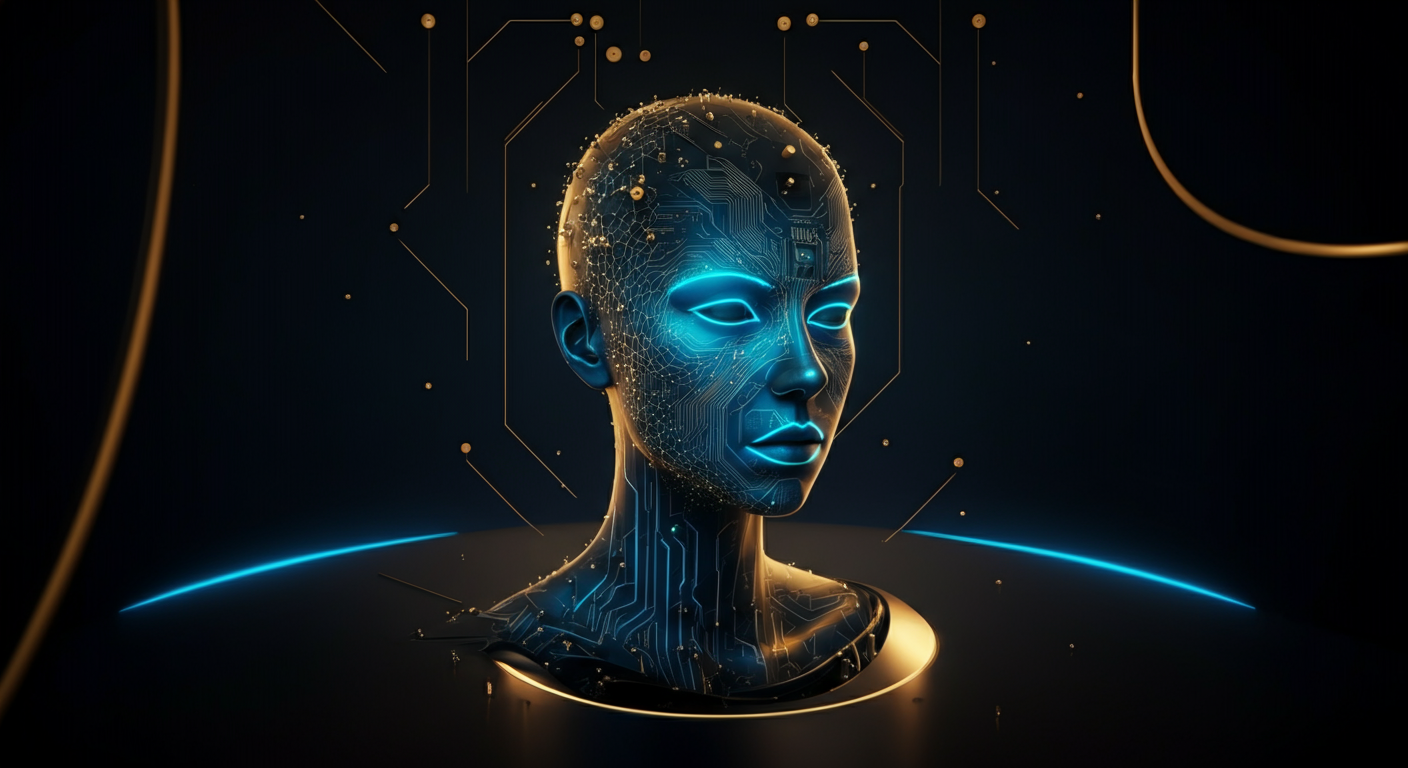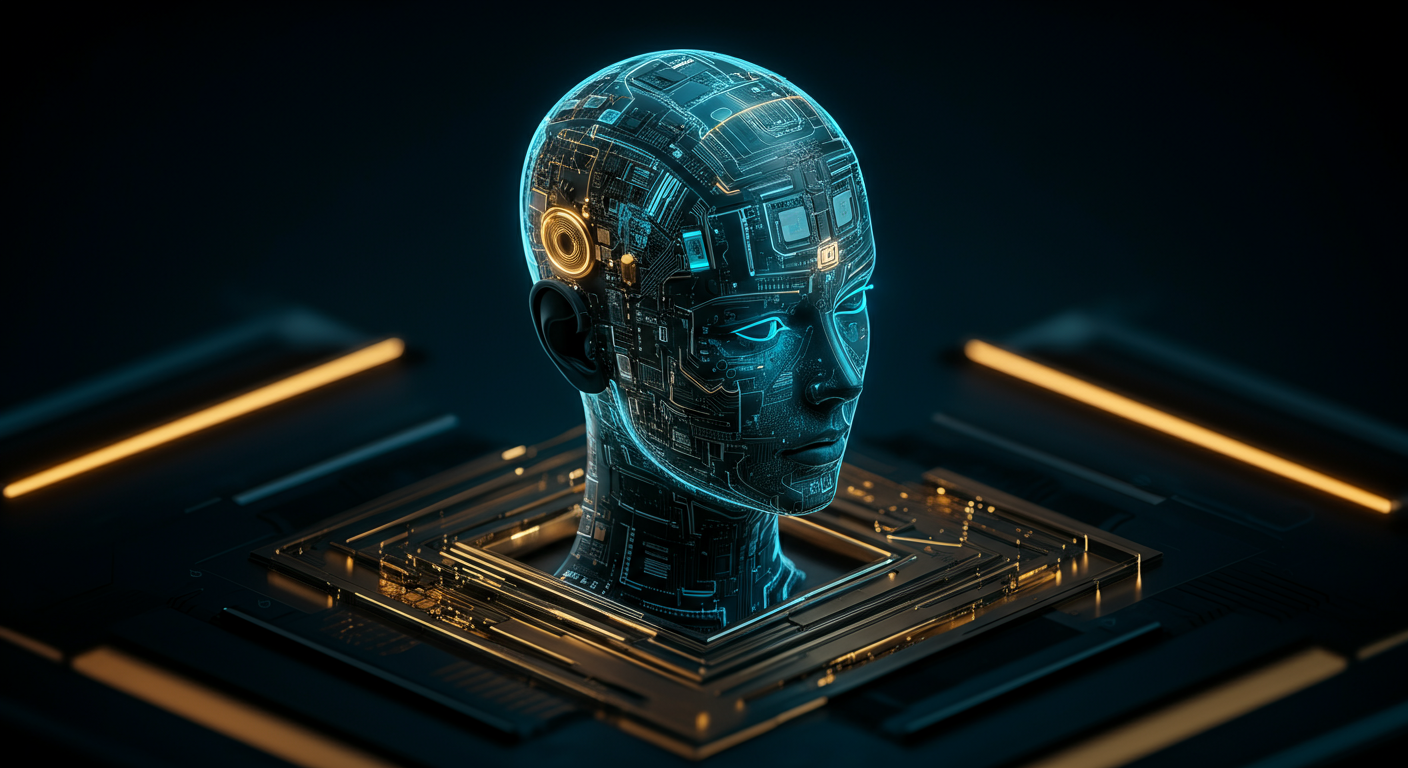Decoding OpenAI's Generative AI Leadership: Innovations, Impact, and Future Trajectory

Decoding OpenAI's Generative AI Leadership: Innovations, Impact, and Future Trajectory
OpenAI's groundbreaking work has reshaped the AI landscape, making generative AI a household concept.
OpenAI's Journey: From Inception to Innovation
- Early Days: Founded in 2015, OpenAI embarked on a mission to ensure that artificial general intelligence (AGI) benefits all of humanity.
- Key Milestones: Breakthroughs like the GPT series (Generative Pre-trained Transformer) and DALL-E (text-to-image model) showcased OpenAI’s knack for innovation. DALL-E is one of the core technologies underpinning OpenAI's generative AI, transforming text prompts into original and detailed images.
- Generative AI Revolution: OpenAI spearheaded the generative AI movement, demonstrating its potential to revolutionize industries from art and entertainment to software development.
Unique Approach to AI
"Our commitment to safety and ethics is paramount."
- AI Safety First: OpenAI prioritizes safety and ethical considerations in AI research and development, striving to minimize potential risks.
- Collaboration is Key: The organization fosters open collaboration among AI researchers, ensuring a broad spectrum of perspectives shape its work.
- Long-Term Vision: OpenAI aims to tackle fundamental AI challenges, pushing the boundaries of what's possible while safeguarding humanity.
Core Technologies and Models
- GPT Series: These language models have redefined natural language processing, enabling realistic text generation, translation, and more.
- DALL-E and Image Generation: DALL-E lets users create images from textual descriptions, opening up new possibilities for creativity and visual communication.
- Commitment to Iteration: OpenAI continuously refines its models, enhancing performance, safety, and alignment with human values.
Decoding OpenAI's Generative AI Leadership: Innovations, Impact, and Future Trajectory
Key Innovations Driving OpenAI's Generative AI Dominance
OpenAI's rise to generative AI leadership is fueled by groundbreaking innovations that are constantly pushing the boundaries of what's possible. Here's a look at the key innovations.
Transformer Models: The Foundation
At the heart of OpenAI's success lies the architecture of Transformer models. These models, described in the seminal paper "Attention is All You Need," excel at processing sequential data, like text, by weighing the importance of different parts of the input.
Think of it as giving the AI "focus," allowing it to understand context in a way previous models couldn't.
Reinforcement Learning from Human Feedback (RLHF)
Reinforcement Learning from Human Feedback (RLHF) takes AI training to a new level by incorporating direct human input. Instead of relying solely on datasets, RLHF uses human preferences to fine-tune models.
- This enables OpenAI to align its models more closely with human values and expectations.
- RLHF helps guide the AI to generate outputs that are not only accurate but also helpful, harmless, and honest.
GPT Models: Scaling to New Heights
OpenAI has continually improved its GPT models, increasing their size and complexity with each iteration. These architectural advancements drive performance improvements, enabling the models to:
- Generate more coherent and contextually relevant text
- Understand and respond to complex prompts
- Exhibit enhanced reasoning abilities
DALL-E: Revolutionizing Creative Industries
DALL-E and other image generation models have made a splash in the creative industries. These models demonstrate the power of AI to generate original and imaginative visuals, impacting fields like:
- Graphic design
- Advertising
- Art
Compute Power and Data: Fueling the Fire
OpenAI's ability to train large language models hinges on access to immense compute power and vast datasets. The organization's strategic partnership with Microsoft provides it with the necessary resources, allowing it to explore new frontiers in AI research.
In conclusion, OpenAI's dominance is a testament to its innovative approach to generative AI, which leverages transformer models, RLHF, scaling strategies, and powerful computing resources to achieve unparalleled results. Want to know how these breakthroughs are influencing the future? Check out AI News for up-to-the-minute coverage.
OpenAI's generative AI is reshaping industries, driving innovation at a pace previously unimaginable.
Content Creation Revolutionized
- Marketing: Tools like CopyAI are generating high-converting ad copy and engaging social media content. This boosts marketing efficiency and allows for hyper-personalization.
- Writing & Translation: From blog posts to technical documentation, ChatGPT is streamlining content creation, and facilitating cross-lingual communication.
- Design: AI-powered platforms like Gamma are enabling users to create stunning presentations and documents with minimal design expertise.
Software Development Acceleration
- Code Generation: GitHub Copilot offers real-time code suggestions, helping developers write cleaner, more efficient code.
- Bug Detection: AI algorithms identify potential vulnerabilities and bugs, improving software reliability.
Customer Service Enhancement
- Chatbots: AI-powered chatbots provide instant support, answering customer queries and resolving issues quickly, improving customer satisfaction.
- Personalized Experiences: Generative AI enables businesses to understand customer preferences and offer tailored solutions. For example, Limechat uses AI to enhance customer interactions on platforms like WhatsApp and Instagram.
Scientific Research and Discovery
- Drug Discovery: AI algorithms analyze vast datasets to identify potential drug candidates, significantly accelerating the drug discovery process.
- Materials Science: Generative models design novel materials with specific properties, pushing the boundaries of innovation.
Economic Implications and Ethical Considerations
- Job Displacement vs. New Opportunities: While generative AI may automate certain tasks leading to job displacement, it also creates new opportunities in AI development, data science, and AI ethics.
- Ethical Risks: Concerns about bias, misinformation, and misuse necessitate ethical guidelines and robust AI governance frameworks, as discussed in the article AIS Double-Edged Sword: Balancing Progress with Peril.
OpenAI's dominance in generative AI is undeniable, but not unchallenged.
Strengths: First-Mover Advantage and Brand Recognition
OpenAI enjoys significant brand recognition thanks to pioneering products like ChatGPT, a conversational AI, giving them a substantial lead in user adoption and mindshare.Their strong research capabilities translate directly into cutting-edge models.
Weaknesses: High Costs and Closed Source Concerns
Developing and training large language models is incredibly expensive. This impacts OpenAI's pricing and accessibility. Plus their shift towards closed-source models limits community contributions and raises concerns about transparency.Opportunities: Enterprise Solutions and Verticals
There's huge potential for OpenAI to further penetrate the enterprise market.- Specialized solutions tailored to specific industries.
- Think AI-powered tools for healthcare, finance, and legal sectors.
Threats: Competition, Regulation, and Ethics
The generative AI landscape is becoming increasingly crowded, with strong competitors like Google. Increased AI regulation poses compliance challenges. The rise of open-source AI offers cost-effective alternatives. Ethical concerns surrounding bias, misinformation, and misuse remain critical threats.Ultimately, OpenAI's continued success depends on navigating these complex challenges while maintaining its innovative edge.
One of the most exhilarating aspects of Generative AI is peering into its future, anticipating the trends and transformations it will unleash.
Generative AI Trends: A Crystal Ball
The future isn't a single, predictable path, but rather a convergence of emerging trends:- Multimodal AI: Forget text-only outputs; we're entering an era where AI seamlessly blends text, images, audio, and video. Imagine DALL-E 3 generating not just images, but short video clips based on your text prompts.
- Personalized AI: Generic AI is yesterday's news. The future is about AI that understands your individual preferences and needs, offering uniquely tailored experiences. Think of Pokee AI as a glimpse into hyper-personalized AI companions.
- Scaling Challenges: Meeting the exponentially growing demand for generative AI requires overcoming significant hurdles like computing power and data availability.
Industry Transformation: The AI Ripple Effect
Generative AI is not confined to the tech world; it's poised to revolutionize various sectors:- Healthcare: Personalized medicine, drug discovery, and AI-assisted diagnostics.
- Education: Tailored learning experiences and AI-powered tutoring systems.
- Finance: Fraud detection, algorithmic trading, and personalized financial advice.
OpenAI's Future Role: Shaping the AI Landscape

OpenAI, a pioneer in the field, is positioned to play a crucial role in defining the AI future, particularly through its contributions to:
- Model Development: Creating more powerful and versatile AI models.
- Ethical Guidelines: Establishing standards for responsible AI development.
- Societal Impact Mitigation: Addressing the potential risks and challenges associated with increasingly powerful AI systems, as highlighted in articles about balancing AI's double-edged sword.
Generative AI models are powerful, but their potential for bias and misuse raises serious ethical considerations.
AI Bias: A Mirror Reflecting Society
- The Problem: Generative AI models learn from vast datasets, which often contain existing societal biases. This can lead to skewed or discriminatory outputs, perpetuating harmful stereotypes. For example, an image generation AI might produce biased results when prompted to depict a CEO, disproportionately showing male figures.
- Mitigation Strategies:
- Careful data curation and cleaning to minimize biased examples.
- Employing techniques to detect and correct bias in model outputs.
- Promoting diverse datasets that accurately represent different demographics.
Combating the Spread of AI Misinformation
- The Challenge: Generative AI can create realistic fake content, including "deepfakes," which can be used to spread misinformation and disinformation. AI misinformation campaigns can manipulate public opinion, damage reputations, and even incite violence.
- Combating Misinformation:
- Watermarking and provenance tracking to identify AI-generated content.
- Developing AI-powered detection tools to identify fake media.
- Promoting media literacy to help users critically evaluate information they encounter online.
OpenAI's Approach to Responsible AI
OpenAI incorporates several practices to help ensure responsible AI including:OpenAI is committed to developing and deploying AI responsibly, including mitigating bias and misinformation.
- Rigorous testing and evaluation of its models.
- Implementing safety policies to prevent misuse.
- Collaborating with researchers and policymakers to address ethical concerns.
The Role of Regulation and Oversight

- Why It's Important: Regulation can provide a framework for ethical and safe AI development, setting standards for transparency, accountability, and fairness. AI regulation helps to balance innovation with societal well-being.
- User Awareness: Learning how to identify common signs of AI bias or manipulation is a critical skill:
- Cross-reference information: Don't rely on a single source.
- Consider the source: Is it reputable, or does it have an agenda?
- Be skeptical of overly emotional content: Misinformation often plays on emotions.
Generative AI holds immense promise, but it's crucial to acknowledge its current shortcomings for responsible development and deployment.
AI Limitations
Generative AI models often lack genuine understanding and reasoning abilities, relying heavily on pattern recognition. For example, ChatGPT, while impressive, can generate nonsensical or factually incorrect text. It's vital to remember these tools are pattern-matching machines, not sentient beings.Challenges in AI Evaluation
Evaluating the quality and originality of AI-generated content poses significant challenges. How do we ensure it's not plagiarized or simply regurgitated from existing sources? Establishing robust AI evaluation metrics remains a key area of research.AI Risks
The potential for malicious use of generative AI cannot be ignored.It's essential to develop strategies for detection and mitigation.Deepfakes, AI-generated spam, and other forms of disinformation are real threats.
Human Oversight
Human oversight and AI collaboration are essential to responsible AI development. AI should augment human capabilities, not replace them entirely. Consider Software Developer Tools; a developer can use these to augment their toolset, but they still oversee the process.In conclusion, while generative AI is revolutionizing numerous fields, it's vital to address the AI limitations, AI evaluation challenges, and potential AI risks. By emphasizing human oversight, we can harness the power of AI for good and mitigate its potential harms. Understanding these limitations is key to shaping the future of AI.
Keywords
OpenAI, Generative AI, Artificial Intelligence, AI Leadership, GPT Models, DALL-E, AI Innovation, AI Ethics, AI Applications, Transformer Models, RLHF, AI Trends, Multimodal AI, Responsible AI, AI Safety
Hashtags
#OpenAI #GenerativeAI #ArtificialIntelligence #AILeadership #AINews
Recommended AI tools

Your AI assistant for conversation, research, and productivity—now with apps and advanced voice features.

Bring your ideas to life: create realistic videos from text, images, or video with AI-powered Sora.

Your everyday Google AI assistant for creativity, research, and productivity

Accurate answers, powered by AI.

Open-weight, efficient AI models for advanced reasoning and research.

Generate on-brand AI images from text, sketches, or photos—fast, realistic, and ready for commercial use.
About the Author

Written by
Dr. William Bobos
Dr. William Bobos (known as 'Dr. Bob') is a long-time AI expert focused on practical evaluations of AI tools and frameworks. He frequently tests new releases, reads academic papers, and tracks industry news to translate breakthroughs into real-world use. At Best AI Tools, he curates clear, actionable insights for builders, researchers, and decision-makers.
More from Dr.

